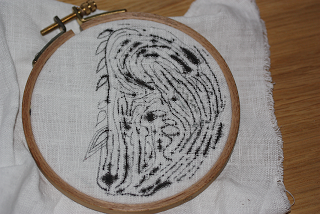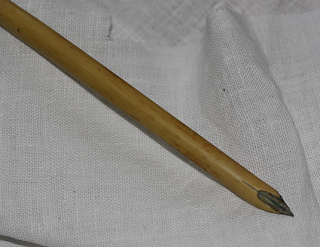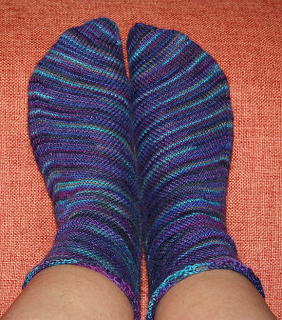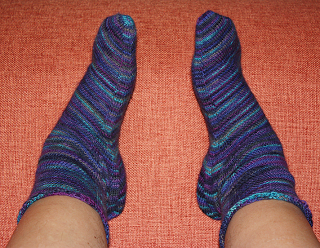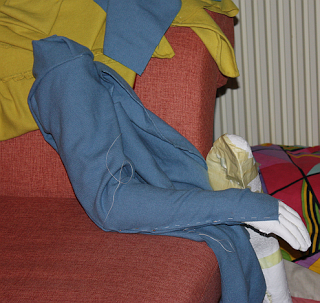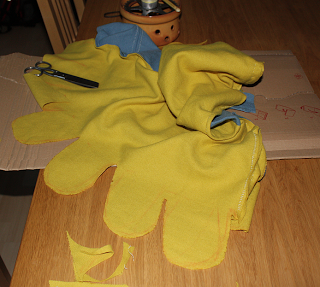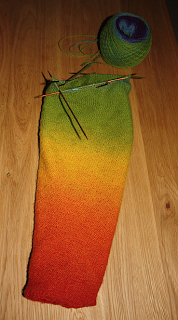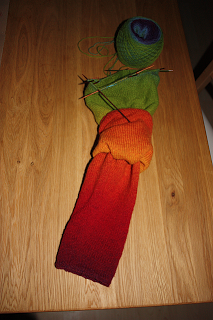January is a good time to stock up wares, resupply and order exciting new stuff - it's already this year, April is looming on the horizon already and with end of April comes the season's start for me.
And that means I'm currently working on acquiring yet another craft-related skill: Cutting quills. Those are textile-craft-related because drawing with ink and quill is the traditional way of preparing an embroidery design, and the tools and materials for the full process of embroidery work are something that I wanted to offer for a good while. After hunting for proper medieval ink for a good while, I have now found somebody that will make it for me and ordered some, so it's about time to hone down my quill-cutting skills.
There are several "scriptorium" suppliers on the market that offer writing implements. Quite often it's a biro tip set with a (brightly coloured) feather on top - which is about as un-medieval as you can get, since the first thing you are going to do is to cut the barbs from the rachis (I looked those terms up in Wikipedia, and so can you) - that is, you cut the interesting stuff that makes a feather look like a feather from the boring central stem. Why? Because the stuff gets into the way otherwise.
A very few suppliers also have proper quills (unprepared, hardened, or hardened and cut), but the cut ones are always intended for writing. What I need is however something else: I need a tip that will reliably (and without blotting) draw fine lines on linen cloth.
So I sat down yesterday and tried several different feathers from different birds, with varying preparation steps. And that's the result:
I'm still figuring out what makes a cut a successful one, but at the moment, it looks as if I'm getting way better and more reliable results in cutting quills from reed than using feather quills. So what will be on sale next season will probably look like this:
I'm not yet sure whether I will test each quill or not - though I'm heavily leaning towards testing each one even if they will not look pristine and unstained on the table then.
Would you prefer unstained and untested or stained and tested?
And that means I'm currently working on acquiring yet another craft-related skill: Cutting quills. Those are textile-craft-related because drawing with ink and quill is the traditional way of preparing an embroidery design, and the tools and materials for the full process of embroidery work are something that I wanted to offer for a good while. After hunting for proper medieval ink for a good while, I have now found somebody that will make it for me and ordered some, so it's about time to hone down my quill-cutting skills.
There are several "scriptorium" suppliers on the market that offer writing implements. Quite often it's a biro tip set with a (brightly coloured) feather on top - which is about as un-medieval as you can get, since the first thing you are going to do is to cut the barbs from the rachis (I looked those terms up in Wikipedia, and so can you) - that is, you cut the interesting stuff that makes a feather look like a feather from the boring central stem. Why? Because the stuff gets into the way otherwise.
A very few suppliers also have proper quills (unprepared, hardened, or hardened and cut), but the cut ones are always intended for writing. What I need is however something else: I need a tip that will reliably (and without blotting) draw fine lines on linen cloth.
So I sat down yesterday and tried several different feathers from different birds, with varying preparation steps. And that's the result:
I'm still figuring out what makes a cut a successful one, but at the moment, it looks as if I'm getting way better and more reliable results in cutting quills from reed than using feather quills. So what will be on sale next season will probably look like this:
I'm not yet sure whether I will test each quill or not - though I'm heavily leaning towards testing each one even if they will not look pristine and unstained on the table then.
Would you prefer unstained and untested or stained and tested?




